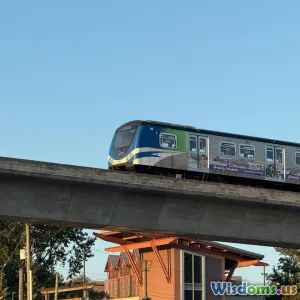
Will AI Controlled Networks Replace Human Engineers
8 min read Exploring whether AI-controlled networks will replace human engineers and the future of network management. (0 Reviews)
Will AI Controlled Networks Replace Human Engineers?
In recent years, the buzz surrounding artificial intelligence (AI) has permeated every corner of the technology sector, promising revolutionary changes in how networks are designed, managed, and maintained. AI-controlled networks—sometimes dubbed self-driving networks—are advancing rapidly, with the ability to detect issues, optimize traffic flows, and even predict failures. This transformative potential invites a pressing question: will AI-controlled networks replace the need for human engineers?
In this comprehensive, in-depth article, we explore the evolving landscape of network management, examining the actual capabilities of AI, its current limitations, and the critical role human engineers continue to play. We will unpack technical insights, industry examples, and future projections to offer a balanced and informed view.
The Rise of AI in Network Management
Artificial intelligence in networking reflects advances across machine learning, data analytics, and automation. Enterprises face increasingly complex networks generated by cloud computing, IoT proliferation, and massive data flows. Human operators alone struggle to maintain performance and security at optimal levels.
Examples of AI Controlled Networks
-
Juniper Networks’ Mist AI: Uses AI to automate wireless network management, analyzing device patterns and user behavior to optimize connectivity without manual intervention.
-
Cisco DNA Center: Employs AI and machine learning to automate network provisioning and detect anomalies, reducing operational costs.
-
Arista Networks’ EOS with Machine Learning: Provides automated network telemetry and predictive maintenance.
These systems share techniques like:
-
Proactive Issue Detection: AI predicts and identifies network failures before they impact users.
-
Policy-driven Automation: AI applies rules based on business policies to manage traffic and security dynamically.
-
Self-Healing: Automated recovery from known errors without human oversight.
The potential to reduce downtime and improve efficiency here is significant—enterprises report up to 60% reduction in network outages post AI adoption (Cisco Annual Report, 2023).
Can AI Humble the Human Network Engineer?
AI certainly excels at repetitive, data-intensive tasks. However, the depth, adaptability, and contextual understanding of human engineers offer irreplaceable value. Let’s assess where AI currently stands versus the role of engineers:
Task Automation vs. Creative Problem Solving
AI automation tools efficiently handle configuration, monitoring, and routine troubleshooting. Yet, network environments are often messy and unpredictable:
-
Interpreting Complex Contexts: Engineers understand business goals and adapt network strategies accordingly.
-
Integrating Diverse Technologies: Human engineers adeptly integrate emerging technologies tailored to unique organizational needs.
-
Ethical and Security Considerations: Engineers evaluate broader implications beyond raw data.
Case Study: Human-AI Collaborative Success
At a major telecommunications company, AI-powered analytics detected intermittent latency issues across the network. However, human engineers analyzed and traced the root cause to an under-optimized integration between legacy systems and new cloud architectures—a problem AI could not resolve independently. The engineers then fine-tuned configurations, showcasing the synergy between human intuition and AI support.
Challenges Facing AI-Controlled Networks
Despite promises, AI-driven networks face hurdles that temper expectations about fully autonomous operations replacing engineers:
Data Dependency and Bias
AI requires extensive, high-quality data to perform optimally. Poor data quality or insufficient datasets lead to flawed models and decision-making.
Security Risks
AI components themselves can be targets for manipulation or attacks, creating new vulnerabilities.
Adaptability Limitations
Rapidly changing network environments, new protocols, or unique client requirements may confuse even advanced AI models.
Human Trust and Accountability
Operational accountability remains a concern: who is responsible when AI-driven automation causes errors? Organizations still rely on engineers to interpret AI recommendations and make critical decisions.
The Evolving Role of Network Engineers
Rather than full replacement, many experts see a shift in the engineers’ role:
From Maintenance to Strategy
Engineers evolve from routine maintenance roles to strategic partners focusing on:
- AI Model Oversight and Training
- Custom Network Architecture Design
- Security Governance
Enhanced Productivity
Automation handles mundane tasks, freeing engineers to handle complex problem-solving and innovation.
Continuous Learning
Engineers require continuous upskilling in AI, machine learning, and emerging network technologies to remain relevant.
Industry Voices and Future Outlook
If we look to industry leaders:
“AI is amplifying the power of human engineers, not replacing them,” – Heather Adkins, Google Director of Information Security.
“Fully autonomous networks are decades away, but AI-assisted networks are here now to help engineers.” – Michael Howard, Cisco VP Data Center Innovation.
Futuristic Perspectives: Companies exploring quantum networking or 6G rely on human innovators to create protocols and frameworks too complex for automated learning today.
Conclusion
AI-controlled networks hold transformational promise. They dramatically improve efficiency, reduce downtime, and handle the scale previously impossible by humans alone. However, the vision of fully autonomous networks operating without human engineers remains aspirational.
Human engineers bring creativity, ethical reasoning, adaptability, and deep contextual understanding—elements that AI has not yet mastered. The reality is a collaborative future where AI powers tools and automation that augment human expertise rather than replace it.
As we navigate this evolving landscape, organizations and professionals who embrace AI as a partner rather than a competitor will thrive. Enhanced productivity, augmented decision-making, and strategic innovation define the next phase of network engineering.
Key Takeaway: AI-controlled networks will not replace human engineers anytime soon. Instead, the partnership between human insight and AI power will shape the networks of tomorrow.
References
- Cisco Annual Report, 2023
- Juniper Networks Mist AI documentation
- Google Security Blog insights on AI automation
- Interviews from Network Engineering Times, 2024
This article serves as a guide for network professionals, decision-makers, and enthusiasts exploring the intersection of AI and network engineering.
Rate the Post
User Reviews
Popular Posts
















